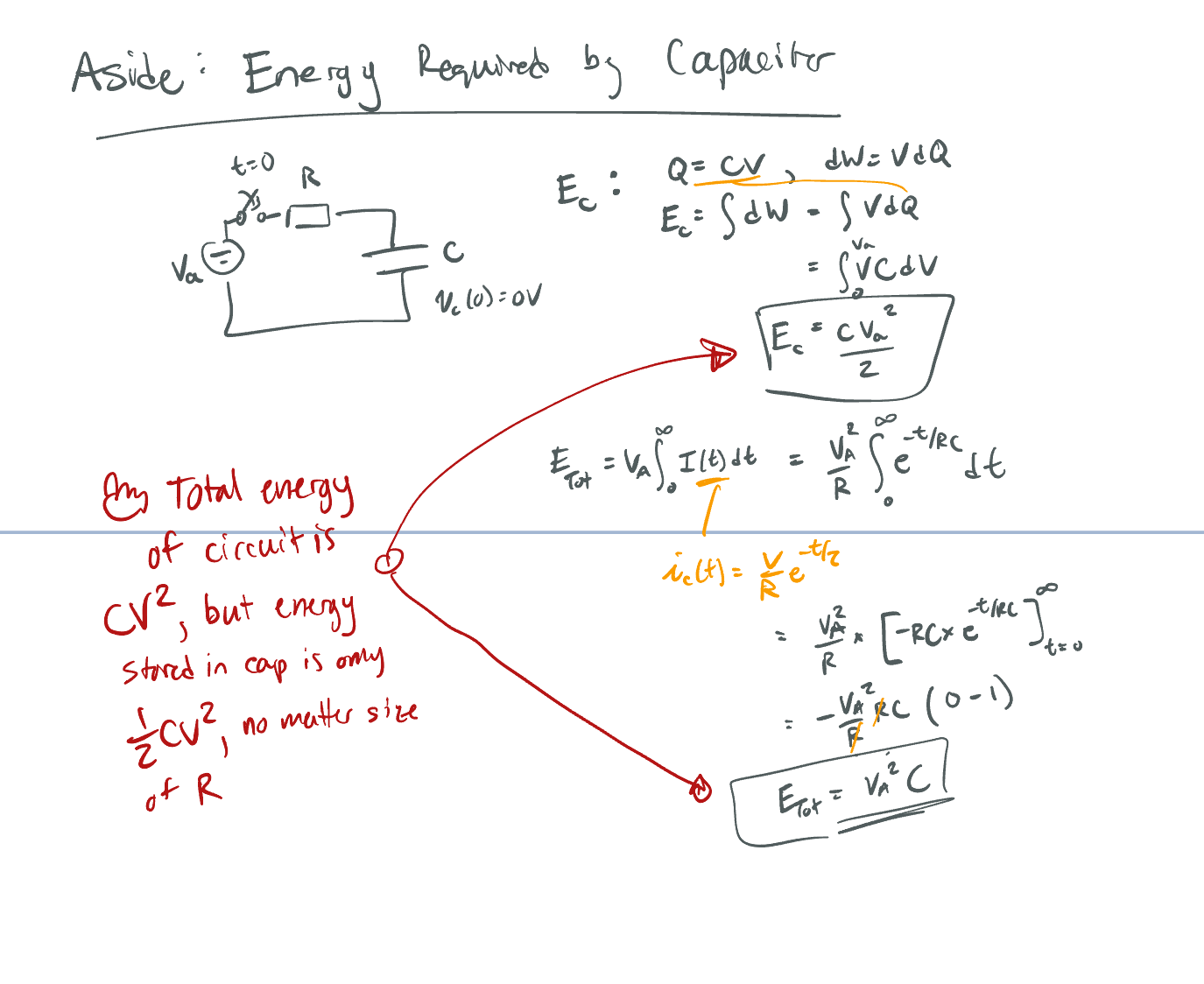The energy required (from e.g. a battery) to charge a capacitor from 0 to is , but the energy stored by the capacitor is only .
This is important for digital circuits, since every time we switch an output from 0 to 1 we have to charge the line capacitance up to , thus we use up , and on the discharge we don’t use up any energy from the supply.
Also note that is dissipated at each switching occurrence, since of course the stored energy in the line capacitance must be discharged somewhere - this is important for thermal considerations especially at high speeds.
Hyperphysics notes that even if we decrease R toward 0, the current charging the capacitor grows large and thus is also large. For high speeds there is a point when this energy is not dissipated by the resistor but radiated as electromagnetic radiation — there is still no free lunch and we only get into the capacitor but use up from the power source.
A simplified “proof” is shown below, note that the R term drops out of the equation:
